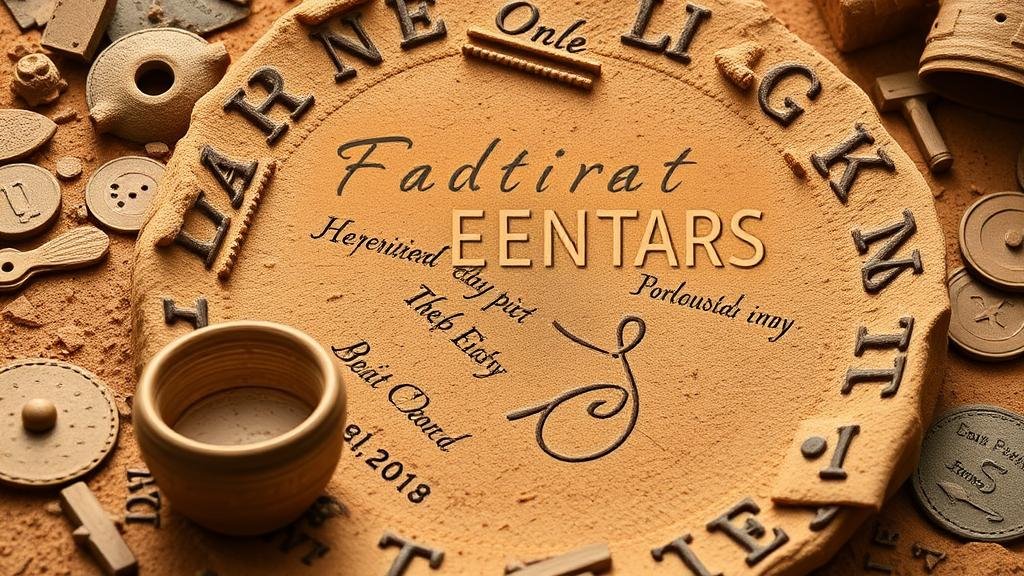Mining Historical Clay Pit Records for Forgotten Ceramic Artifacts
Mining Historical Clay Pit Records for Forgotten Ceramic Artifacts
The study of ceramic artifacts is fundamental to understanding past cultures, particularly in regions with rich histories of pottery production. Recent research has highlighted the importance of historical clay pit records in uncovering forgotten ceramic artifacts, enabling archaeologists and anthropologists to reconstruct socio-economic and cultural practices of previous eras. This article explores the techniques and methodologies employed in mining these records, as well as the significant findings that have emerged from such studies.
Historical Context and Significance
Throughout history, ceramics have played an essential role in various cultures, serving both functional and decorative purposes. earliest instances of ceramic production can be traced back to approximately 29,000 BC in present-day Czech Republic, where the Venus of Dolnà Věstonice was found. Over millennia, numerous pottery styles emerged, reflecting technological advancements and cultural evolutions.
In regions such as the American Southwest, the history of clay extraction and pottery production is closely tied to indigenous practices and trade routes. The Pueblo peoples, for instance, have been using local clay for pottery since around 200 AD. Historical clay pit records reveal not just the locations used for clay extraction but also the variety of clays utilized and the firing techniques employed.
Methodological Approaches
Mining historical clay pit records entails a combination of archaeological fieldwork, archival research, and interdisciplinary collaboration. The following methods are pivotal in this process:
- Archival Research: This involves examining historical documents, including property records, maps, and journals, to locate and understand the context of historical clay pits.
- GIS Mapping: Geographic Information Systems (GIS) technology aids in visualizing and analyzing spatial data related to clay extraction sites across historical landscapes.
- Field Surveys: Systematic field surveys of identified clay pits allow researchers to collect samples for analysis, which can reveal the types of ceramics that were produced.
- Pottery Analysis: Detailed analysis of ceramic samples – such as petrographic and chemical composition analysis – serves to identify provenance and production techniques.
Case Studies
The Talavera Pottery in Puebla, Mexico
One of the most well-documented cases of mining clay pit records is the Talavera pottery tradition in Puebla, Mexico, which dates back to the 16th century. Researchers utilizing historical records have identified the specific clay pits used by artisans. Analysis indicates that the rich red clay sourced from these pits contributes significantly to the unique qualities of Talavera pottery, including its distinctive glaze and durability.
Plus, historical documents suggest that these clay resources were integral to trade, as pots made from this clay were often shipped throughout the Spanish Empire. The interplay of local material availability and global trade significantly impacted local economies and artistic expressions.
Pottery of the Tewa Pueblos
In the American Southwest, the Tewa Pueblo peoples have a long-standing tradition of pottery. By mining historical clay pit records and integrating them with oral histories, researchers have been able to illuminate the cultural significance of local resources. For example, studies have shown that specific clay sources were selected based on their properties and spiritual significance, thus entwining natural resources with cultural identity.
By comparing the clay materials found in archaeological pottery with historical records, researchers can trace changes in pottery styles and techniques, revealing insights into social changes and cultural interactions over the centuries.
Implications for Future Research
The mining of historical clay pit records holds significant implications for future research in archaeology and ethnography. By incorporating advanced technologies such as 3D modeling and digital archival methods, researchers can further enhance their understanding of ceramic practices and cultural narratives.
Also, as concerns about cultural heritage preservation grow, excavating these histories from clay pit records can inform contemporary pottery practices and promote sustainable usage of local resources.
Conclusion
The investigation into historical clay pit records serves as a vital touchstone in recovering and understanding forgotten ceramic artifacts. Through a combination of archival research, GIS technology, and field studies, it is possible to paint a more complete picture of how past societies interacted with their environment. integration of these methodologies facilitates a nuanced comprehension of cultural practices and technological advancements associated with ceramics.
Moving forward, interdisciplinary research approaches not only promise to uncover more about forgotten artifacts but also emphasize the critical need for preserving and honoring cultural legacies tied to clay resources.
In summary, the historical study of clay sources is not merely an academic exercise; it has the power to bridge past and present, linking modern potters, archaeologists, and the communities whose histories are intertwined with clay.


